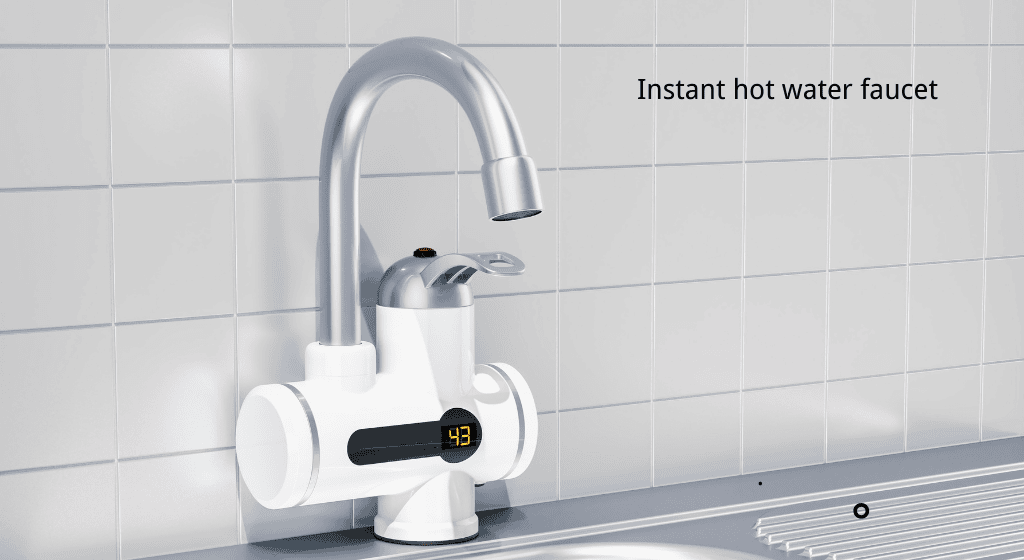Related Keywords:
- How to check hot water heater element
- Heating element for hot water heater
- Hot tub heating element
- Hot water heater elements
- How to test hot water heater element
Introduction
Heating water in residential, commercial, and industrial systems, a hot water heater element is the main component. Whether you have a tankless water heater or a conventional storage tank variant, knowing how they operate, how to check them, and when to replace them will help you conserve energy, lower costs, and stop system breakdowns. Backed by technical data and industry standards, this guide covers everything from heating element for hot water heater designs to troubleshooting advice.
1. How Hot Water Heater Elements Work
Elements of hot water heaters work on the principles of electrical resistance. Usually built of nichrome or stainless steel, the heating element for hot water heaters generates heat when electricity flows through it by means of electrical resistance. Conduction allows this heat to reach the surrounding water.
Key technical details:
- Resisting oxidation, nichrome (80% nickel, 20% chromium) endure 1200°C temperatures.
- Residential components range from 3,500W to 5,500W (120V or 240V).
- Modern materials lose little heat to the surroundings, achieving 95% thermal efficiency.
For instance, A. O. Using spiral-wound nichrome coils, Smith’s PowerCore® components maximize surface contact with water, therefore cutting 18% of energy waste.
2. How to Check Hot Water Heater Element
Checking a hot water heater element involves visual inspection and electrical testing:
- Visual inspection: Look for cracks, corrosion, or burnt marks on the element’s surface.
- Voltage test: Use a multimeter to confirm 120V/240V input (disconnect power first!).
- Resistance test: Measure resistance with a multimeter. A functional 4,500W element at 240V should show ~12.9 ohms (R = V²/P).
Safety note: Always shut off the circuit breaker and water supply before testing.
3. How to Test Hot Water Heater Element
Testing a hot water heater element requires precise steps:
- Turn off power: Switch off the circuit breaker.
- Drain the tank: Remove 5-10 gallons of water to access the elements.
- Remove the element: Use a socket wrench (typically 1-1/2″ or 1-5/8″ size).
- Test continuity: A functioning element shows continuity (beeping on a multimeter). No continuity indicates failure.
Common failures:
- Open circuit: Element burned out (resistance = infinity).
- Short circuit: Resistance drops below 5 ohms (internal insulation failure).
4. When to Replace Hot Water Heater Elements
Replace a hot water heater elements if:
- Water takes over 30 minutes to heat.
- Frequent tripping of circuit breakers occurs.
- The element shows physical damage or corrosion.
Cost-saving tip: Replace both elements simultaneously if one fails, as the second often fails within 6 months (statistical average from Rheem’s service logs).
5. Hot Tub Heating Element Maintenance
Hot tub heating elements require specialized care due to harsh water conditions:
- Winterizing: Drain and blow out lines to prevent freeze damage.
- Descale every 6 months: Use citric acid (5%) to dissolve calcium buildup.
- UV protection: Install an ozone generator to reduce algae growth on elements.
6. Types of Heating Elements for Water Heaters
Heating element for hot water heater designs vary by application:
- Flange-style elements: Bolted into tanks (common in residential units).
- Over-the-side elements: Easy installation in open tanks.
- Immersion elements: For industrial vats (up to 55kW power).
Material comparison:
- Stainless steel: Best for acidic water (316L grade resists pitting).
- Copper: High thermal conductivity but prone to corrosion.
7. DIY Replacement Guide for Hot Water Heater Elements
Step-by-step replacement process:
- Turn off water heater and water supply.
- Drain the tank using a garden hose.
- Unscrew old elements with a socket wrench.
- Apply thread sealant (RTV silicone) to new hot water heater elements.
- Reassemble and refill the tank.
Pro tip: Use a torque wrench to tighten elements to manufacturer specs (typically 15-20 ft-lbs).

8. Future Trends in Water Heater Technology
Innovations reshaping the market:
- Heat pump hybrid systems: Reduce energy use by 65% (e.g., Bosch’s Compress 7000).
- Self-cleaning elements: Nano-coatings prevent mineral buildup.
- Smart sensors: AI algorithms adjust power based on usage patterns.
The global water heating market is projected to reach $112B by 2030 (Grand View Research), driven by energy efficiency mandates.
FAQ: Hot Water Heater Element FAQs
1. How long do hot water heater elements last?
Typically 8-12 years. Frequent hard water areas may reduce lifespan to 5 years.
2. Can I use a higher wattage element?
Yes, but ensure the thermostat matches the wattage. Oversizing increases energy use.
3. Why is my water heater making popping noises?
Lime scale buildup on heating element for hot water heater causes steam pockets to collapse.
4. How to descale a hot tub heater?
Soak elements in vinegar (5% acetic acid) for 4-6 hours, then rinse.
5. What’s the difference between 120V and 240V elements?
240V elements heat water twice as fast and are standard in modern tanks.
6. Are electric elements safer than gas?
Electric elements eliminate combustion risks but require GFCI protection.
について Zhongshan Jinzhong Electric Heating Tech Co., Ltd.
As a leading heating element for hot water heater manufacturer, we supply OEM/ODM solutions to Philips, Midea, Delonghi, and more. Our expertise includes:
✅ Custom hot tub heating element designs with 0.1mm precision
✅ 10-year lifespan testing under ASTM D2157 standards
✅ Global shipping with 2-year warranty
✅ Custom alloys for high-sulfur water regions
Contact our engineers for prototypes or bulk orders – [www.jinzho.com]


